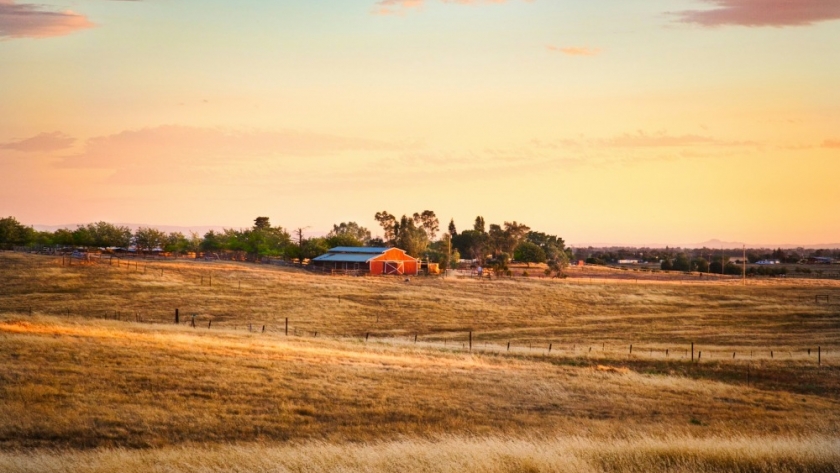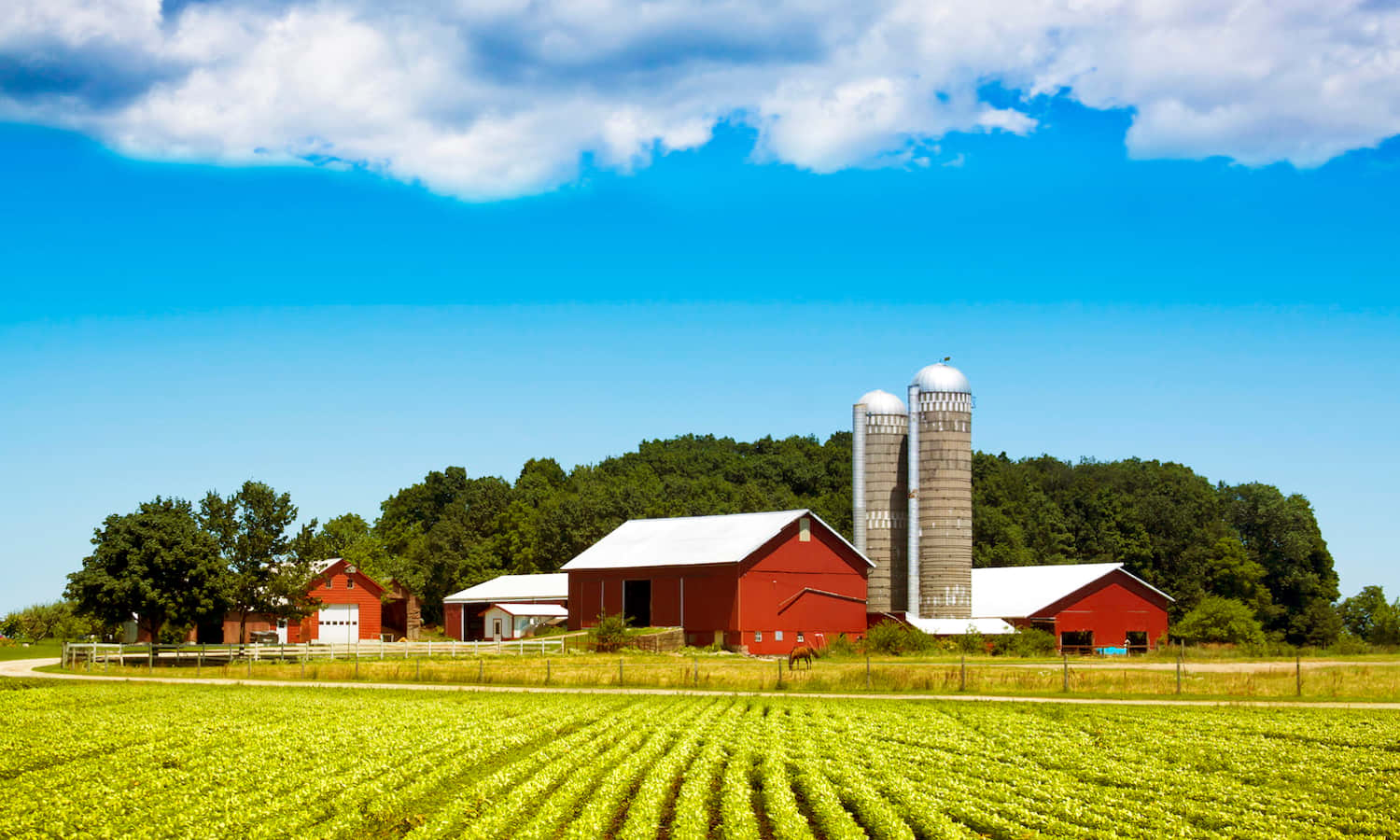
In the United States, consolidation throughout the agricultural sector makes it difficult for smaller, independent farms to survive. According to the 2022 Census of Agriculture, large farms comprise only 4 percent of the total number of farms in the U.S. but control two-thirds of agricultural land. Now many are calling for solutions to help support smaller scale and beginning farmers and revitalize rural communities.
“The industry trends have just made it more difficult for a small acreage farmer to produce a profit and almost certainly they prohibit you from making a living at it,” says Shaun Miller, farmer at Miller Hogs and Hay in central Iowa, who partners with specialty meat company Niman Ranch to market his pigs. “It changes what your vision of a family farm is and how you have to go about getting there.”
Between 1935 and 2023, the number of farms in the U.S. decreased by 72 percent, while the average farm size nearly tripled. Farmers have reduced the amount of labor and land used to farm and increased inputs such as machinery, farm structures, fertilizer, and pesticides, according to the U.S. Department of Agriculture (USDA). Today, just four companies represent 73 percent of U.S. beef processing and 67 percent of pork processing, and only four corporations control 65 percent of the global agrochemicals market.

“To farm in a modern way, you have to be large, you have to have economies of scale, and that requires an impressive amount of chemical, genetic, and machine technology,” says Dr. David Peters, Professor of Agricultural and Rural Policy at Iowa State University. “A lot of smaller farmers cannot make those investments…[They] are increasingly falling behind and they drop out.”
Consolidation has had a range of negative impacts for U.S. family farmers, says Jordan Treakle, National Programs and Policy Coordinator at the National Family Farm Coalition: Fewer and less competitive markets, which usually lowers prices for producers; fewer places to source agricultural inputs, which usually means higher transport costs and traveling time for farmers; and fewer locally adapted seed options.
“Independent family farms are the bedrock of healthy rural economies,” says Treakle. But “systemic low prices have undermined farmer livelihoods and forced hundreds of thousands of family farmers out of business across the country.”
As farming becomes more expensive and uncertain—and urban areas provide more job opportunities and off-farm career paths—young people are migrating out of rural communities. Departures from rural counties over the past two decades have outweighed new arrivals. Meanwhile, the average age of U.S. farm producers rose from about 50 years old in 1978 to 58 years in 2022, according to the USDA.
Population decline has meant the loss of essential public infrastructure for many rural communities—such as schools, clinics, hospitals, and local food infrastructure—and the loss of middle-income jobs.
“You have this growing inequality,” says Peters. “As the population declines, you don’t need as many school teachers. The school consolidates. You lose your hospital. There goes the jobs of nurses and other healthcare workers. As the population continues to decline, and the only people making money is a small segment of rich owners…you lose that rural professional service industry.”
And consolidation has had significant social consequences: According to a 2021 Union of Concerned Scientists study, the number of young and beginning farmers has declined faster in U.S. counties experiencing faster farmland consolidation. States experiencing the most consolidation have the lowest proportion of Black farmers, while those with the least consolidation tend to have higher proportions.
“[This study] provides an important data-driven analysis of trends we’ve been hearing about in our membership, particularly among our farmers of color, for decades,” says Treakle. “As our food and agriculture sector becomes more consolidated across the board, this puts economic pressure on producers to scale up operations—including how much farmland they own—which in turn can exacerbate systemic socio-economic inequalities.”
Miller felt this pressure growing up in central Iowa. Despite being a fourth-generation farmer, he had to work a desk job for two decades before farming even part-time was feasible. He recalls seeing independent farms decline significantly in the early 1990s and being unsure whether he could make it as a small-scale, sustainable hog farmer, which is now a rarity in central Iowa.
“I came from a family farm that was squeezed out by consolidation, a loss of public markets, and high interest rates,” says Miller. “When I left high school…farming was not an option.”
Miller found a path to profitability by joining Niman Ranch, a network of more than 600 small, independent U.S. family farmers and ranchers that uphold high standards of sustainable and humane farming in exchange for a guaranteed market for their product. It offers a way for Miller to raise hogs as an independent producer and not worry about the conventional market’s volatile prices. Niman Ranch recently conducted an economic impact analysis of its business model and found that it generates 50 percent more economic value for rural communities and 150 percent more jobs than the conventional model per 100,000 pigs.
“These are great outlets for producers who embrace the old-fashioned methods like they grew up on,” says Miller. Miller raises his pigs using practices including no crates, antibiotic free and with plenty of room to roam.
In addition to companies like Niman Ranch, public policy can address agricultural consolidation, the loss of family farms, and the range of negative impacts these trends have had on rural communities across the U.S.
The 2021 Executive Order on Promoting Competition in the American Economy aimed to increase options for smaller farms by encouraging stronger enforcement of antitrust laws. And in 2024, the USDA issued the Inclusive Competition and Market Integrity rule under the Packers and Stockyards Act, designed to establish clearer, more effective standards to prevent discrimination, retaliation, and deception against producers and growers.
But Miller, Peters, and Treakle say much more is needed to promote stronger rural off-farm economies, maintain middle-income jobs that supplement farm income, and mitigate rural population loss.
“I think there is a general recognition in most of rural America that much of the agricultural policy landscape is not centering on supporting small and mid-scale independent farmers,” says Treakle. “Status quo of the past decades is simply not working for most independent family farmers.”
Food Tank
